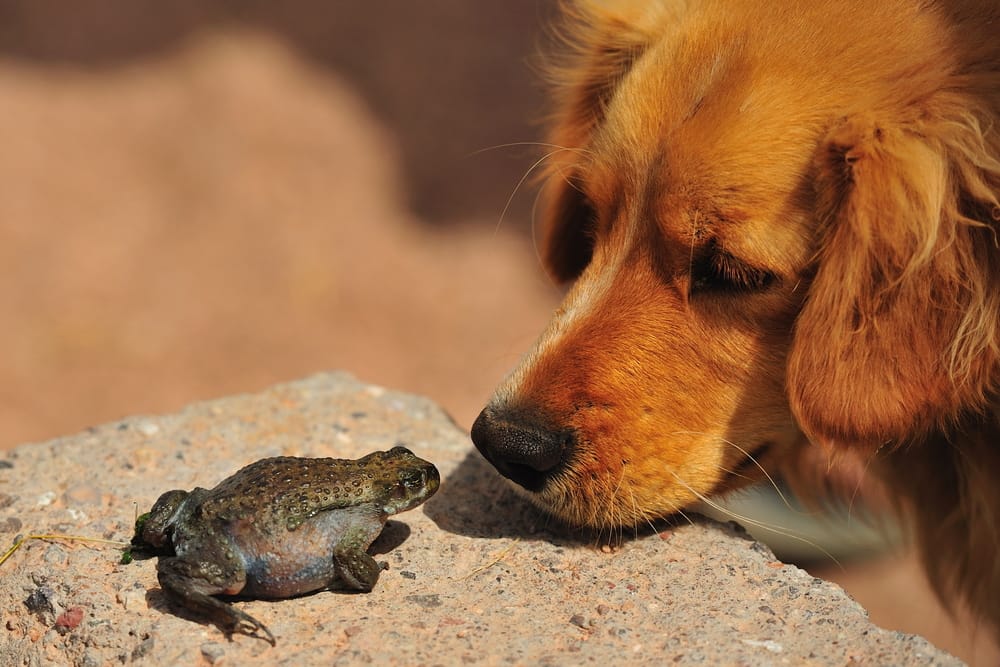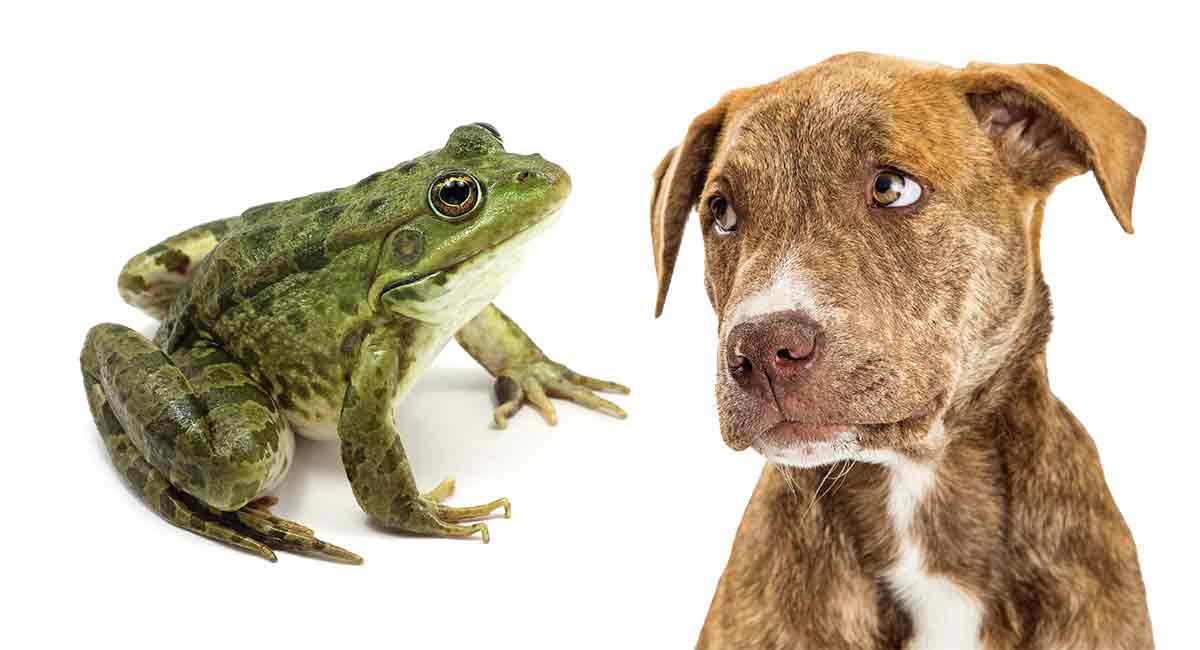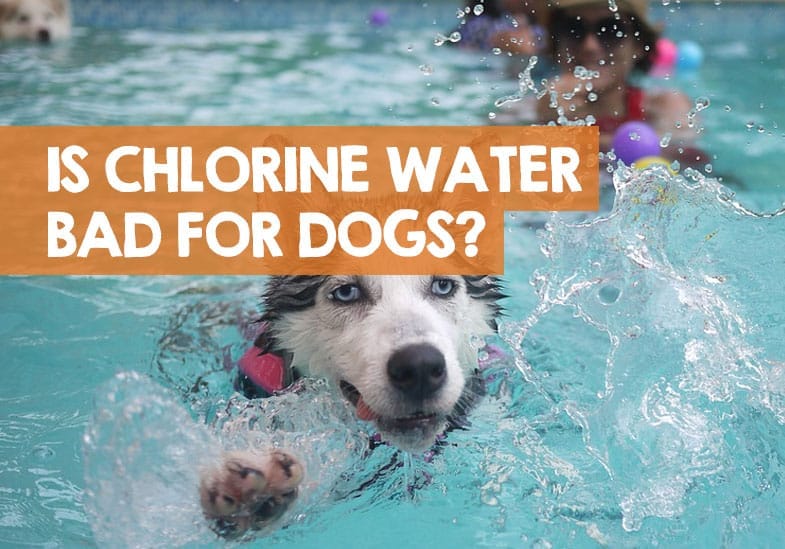Frogs are fascinating creatures that are found in many parts of the world. They come in different sizes, shapes, and colors. While some people keep them as pets, others encounter them in their natural habitats. However, one question that often arises is whether or not frogs are poisonous to dogs. This article seeks to provide answers to this question and shed light on the potential dangers that frogs pose to dogs.

It is important to note that not all frogs are poisonous. Some species of frogs, such as the American Bullfrog, are harmless to dogs. However, there are some species of frogs that secrete toxins from their skin that can be harmful or even deadly to dogs. These toxins can cause a range of symptoms, including vomiting, diarrhea, seizures, and even death in severe cases. Therefore, it is important for dog owners to be aware of the potential dangers of frogs and take appropriate measures to protect their pets.
In this article, we will explore the different types of poisonous frogs, the symptoms of frog poisoning in dogs, and what to do if your dog comes into contact with a poisonous frog. We will also provide tips on how to keep your dog safe from frogs and other potential hazards in their environment. By the end of this article, you will have a better understanding of the risks associated with frogs and be better equipped to protect your furry friend.

Understanding Amphibian Toxicity
Amphibians, including frogs, can produce toxins that can be harmful to dogs. Understanding the nature of amphibian toxicity is important for dog owners to keep their pets safe.
Difference Between Poisonous and Venomous
It is important to distinguish between the terms "poisonous" and "venomous" when discussing amphibians. Poisonous animals produce toxins that are harmful when ingested or touched, whereas venomous animals produce toxins that are injected through a bite or sting.
Frogs are considered poisonous because their skin contains toxic substances that can be harmful when ingested or touched. In contrast, venomous animals, such as snakes, produce toxins that are injected through their fangs.
Toxins in Amphibians
The toxins found in amphibians are produced by specialized skin glands. There are several types of toxins that can be found in amphibians, including bufotoxin and batrachotoxin.
Bufotoxin is a toxin that is commonly found in toads and can cause a range of symptoms in dogs, including vomiting, diarrhea, and seizures. Batrachotoxin is a toxin that is found in certain species of poison dart frogs and can be lethal to dogs.
It is important for dog owners to be aware of the potential risks associated with amphibians and to take steps to keep their pets safe. This may include keeping dogs on a leash when walking near bodies of water, avoiding letting them drink from puddles or ponds, and seeking veterinary care if they show signs of illness after coming into contact with an amphibian.
Overall, understanding the nature of amphibian toxicity is an important step in keeping dogs safe from harm.
Common Poisonous Frogs and Toads to Dogs
Species of Poisonous Toads
There are several species of toads that are poisonous to dogs. The most common ones are the cane toad, Colorado River toad, marine toad, and common toad. These toads secrete a toxic substance from their skin that can cause serious harm to dogs if ingested. The toxin affects the dog's nervous system, causing seizures, tremors, and even death in severe cases.
The cane toad, also known as the Bufo toad, is a large toad that is native to South and Central America. It has been introduced to other parts of the world, including Australia and Florida. The toxin in its skin is highly toxic and can cause death in dogs within 15 minutes of ingestion.
The Colorado River toad, also known as the Sonoran Desert toad, is found in the southwestern United States and Mexico. Its toxin can cause hallucinations, seizures, and death in dogs.
Poisonous Frogs
Not all frogs are poisonous, but there are some species of frogs that are toxic to dogs. The most well-known species of poisonous frogs are the poison dart frogs. These brightly colored frogs are found in Central and South America and secrete a toxin from their skin that can cause paralysis and death in dogs.
One of the most toxic species of poison dart frogs is the Incilius alvarius, also known as the Sonoran Desert toad. This frog is found in the southwestern United States and Mexico and secretes a potent toxin that can cause seizures, respiratory failure, and death in dogs.
It is important for dog owners to be aware of the potential dangers of poisonous frogs and toads and to take steps to prevent their dogs from coming into contact with them. If a dog does ingest a poisonous frog or toad, immediate veterinary care is necessary to prevent serious harm or death.
Symptoms of Amphibian Toxin Poisoning in Dogs
Dogs are curious animals and they tend to explore their surroundings by sniffing, licking, and even eating things that they shouldn't. One of the dangers that dogs can encounter is the ingestion of toxic substances, such as the toxins found in some species of amphibians.

Immediate Physical Reactions
When a dog ingests amphibian toxins, they can experience a range of immediate physical reactions. These can include vomiting, diarrhea, drooling, foaming at the mouth, and disorientation. Dogs may also experience seizures, irregular heartbeat, and pain. In severe cases, the dog may even collapse or go into shock.
It is important to note that the severity of the symptoms can vary depending on the amount of toxin ingested, the specific type of amphibian, and the size and health of the dog.
Long-Term Health Effects
If a dog survives the initial poisoning, they may still be at risk for long-term health effects. Some amphibian toxins can cause damage to the dog's kidneys, liver, or other organs. This can lead to chronic health problems or even death.
Owners should be aware of the risks associated with their dogs coming into contact with amphibians, especially during the warmer months when these animals are more active. If a dog shows any symptoms of amphibian toxin poisoning, they should be taken to a veterinarian immediately for treatment.
In conclusion, dogs can experience a range of symptoms when exposed to amphibian toxins. It is important for owners to be aware of these risks and to take appropriate precautions to keep their dogs safe.
First Aid and Treatment for Toad Poisoning
Toad poisoning can be a serious health concern for dogs. Immediate actions should be taken if a dog is suspected to have come into contact with a poisonous toad. The following subsections will outline the necessary steps to take in case of toad poisoning.
Immediate Actions to Take
The first step to take in case of toad poisoning is to rinse the dog's mouth with water. This will help to remove any toxins that may still be present in the mouth. It is important to avoid letting the dog swallow the water as this can cause further complications. A wet cloth can be used to wipe the dog's mouth clean if necessary.
Next, the dog should be taken to a cool and quiet place to rest. This will help to reduce the dog's heart rate and prevent further absorption of the toxins. It is important to keep the dog calm and avoid any unnecessary movements.
Veterinary Interventions
If the dog's condition does not improve or if the dog shows any signs of distress, it is important to seek veterinary attention immediately. The veterinarian will be able to provide the necessary treatment for toad poisoning.
The treatment for toad poisoning may include supportive care such as intravenous fluids and medications to control seizures. The veterinarian may also induce vomiting to remove any remaining toxins from the dog's system.
Prognosis for toad poisoning depends on the severity of the poisoning and the promptness of the treatment. With proper care and treatment, most dogs recover from toad poisoning without any long-term complications.
In conclusion, toad poisoning can be a serious health concern for dogs. Immediate actions should be taken if a dog is suspected to have come into contact with a poisonous toad. Veterinary attention should be sought if the dog's condition does not improve or if the dog shows any signs of distress. With proper care and treatment, most dogs recover from toad poisoning without any long-term complications.
Prevention and Safety Measures
Protecting Pets from Poisonous Amphibians
Frogs and toads can secrete toxins through their skin, which can be harmful or even fatal to dogs if ingested or absorbed through the skin. To protect pets from poisonous amphibians, it is important to supervise them when they are outdoors and prevent them from coming into contact with any frogs or toads.
If a pet does come into contact with a frog or toad, it is important to immediately wash the affected area with soap and water. If the pet has ingested a frog or toad, it is important to seek veterinary care immediately.
Creating a Safe Outdoor Environment
To prevent pets from coming into contact with poisonous amphibians, it is important to create a safe outdoor environment. This can be done by:
- Removing any potential hiding spots for frogs and toads, such as piles of leaves or debris.
- Keeping the grass and vegetation trimmed to reduce the amount of hiding spots for frogs and toads.
- Providing a water bowl for pets to drink from, rather than allowing them to drink from outdoor sources such as ponds or puddles.
- Being aware of the local wildlife in the area and taking appropriate precautions to protect pets.
By following these prevention and safety measures, pet owners can help protect their pets from the potential dangers of poisonous amphibians.

Geographical Distribution and Habitats
Frogs can be found in many different habitats around the world, including North and South America, Australia, and parts of Asia and Africa. While not all frogs are poisonous, certain species can be harmful to dogs if ingested.
Areas with High Toad Populations
In the United States, states such as Florida, Texas, and Arizona are known to have high populations of toads, which can pose a risk to dogs. The cane toad, also known as the giant neotropical toad, is a particularly dangerous species found in these regions. These toads secrete a milky white substance from their skin, which can be toxic if ingested by dogs.
Natural Habitats of Concern
Frogs and toads are typically found in natural habitats such as wetlands, rivers, and forests. In South America, the poison dart frog is a brightly colored species that is known for its toxicity. In Australia, the cane toad is an invasive species that has spread throughout the country and can be found in a variety of habitats.
It is important for dog owners to be aware of the potential risks that frogs and toads can pose to their pets. If a dog ingests a poisonous frog or toad, they may experience symptoms such as vomiting, diarrhea, and seizures. It is recommended that owners seek veterinary care immediately if they suspect their dog has ingested a poisonous frog or toad.
Overall, while frogs and toads may seem harmless, certain species can be dangerous to dogs if ingested. It is important for dog owners to be aware of the potential risks and take steps to protect their pets from harm.
Understanding Dog Behavior and Risks
Curiosity and Predatory Instincts
Dogs are naturally curious and have predatory instincts. They are known to paw, bite, and even ingest small animals that they come across. This behavior can be dangerous, especially if the animal is poisonous. Frogs, in particular, can be a tempting target for dogs due to their small size and quick movements.
Risks of Ingesting Amphibians
Ingesting a frog can be harmful to a dog's health. Some species of frogs secrete toxins through their skin as a defense mechanism against predators. These toxins can cause a range of symptoms in dogs, including vomiting, diarrhea, and seizures. In severe cases, the toxins can be fatal.
It is important for dog owners to be aware of the risks associated with their pet's behavior around amphibians. If a dog shows any symptoms of illness after ingesting a frog or other small animal, they should be taken to a veterinarian immediately.
To prevent these risks, it is recommended to keep dogs on a leash when outside and supervise them closely. Owners should also be aware of the types of animals that are present in their area and take steps to keep their pets safe.
Legal and Conservation Concerns
Protected Species Regulations
Frogs are an essential part of the ecosystem and are protected in many areas. In some regions, certain species of frogs are listed as endangered or threatened. It is crucial to check with local wildlife and conservation authorities before taking any action that may harm or endanger these protected species.
In the United States, the Endangered Species Act (ESA) protects endangered and threatened species, including some species of frogs. Under the ESA, it is illegal to harm, harass, or kill these species, and penalties for violating this law can be severe. It is essential to understand the regulations in your area and take necessary precautions to avoid harming protected species.
Impact on Local Ecosystems
Frogs play a vital role in the local ecosystem, and their absence can have a significant impact on the balance of the ecosystem. Frogs are natural predators of insects, and their absence can lead to an increase in insect populations, which can harm plants and other animals. Additionally, frogs are an essential food source for many predators, including birds, fish, and snakes.
When dogs eat frogs, they can disrupt the natural balance of the ecosystem, causing harm to the local environment. It is crucial to keep dogs away from frogs to avoid any negative impact on the ecosystem.
In conclusion, it is important to understand the legal and conservation concerns associated with frogs and their impact on local ecosystems. By taking necessary precautions and understanding the regulations in your area, you can help protect these essential creatures and maintain a healthy ecosystem.

Conclusion
In conclusion, being aware of the potential toxicity of frogs to dogs is an essential aspect of responsible pet ownership. By understanding the risks, recognizing danger signs, and taking proactive measures, we can ensure the well-being of our canine companions.
FAQs
- Q1: Can all frogs be poisonous to dogs?
- A: No, not all frogs are toxic to dogs. However, certain species pose a threat, and it's crucial to be aware of them.
- Q2: What should I do if my dog encounters a poisonous frog?
- A: Quickly intervene, keep the frog away from your dog, and contact a veterinarian immediately.
- Q3: Are there home remedies for frog poisoning in dogs?
- A: While veterinary intervention is necessary, some home remedies, like rinsing the dog's mouth, can be done initially.
- Q4: How can I create a frog-safe environment for my dog?
- A: Minimize potential risks by removing frog habitats, securing your yard, and training your dog to avoid frogs.
- Q5: Are there legal consequences for not preventing frog poisoning in dogs?
- A: Neglecting responsibilities as a pet owner can have legal implications, emphasizing the importance of preventive measures.
More poisonous or toxic articles:










